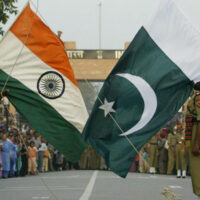BEIRUT: I had two articles due, a term paper to write and a fever when I chose to forget about everything and fill out six official-looking papers that had been sitting on my desk for a week.
Those papers were life changing. They were a ticket to a whole new world where I built life-long friendships, walked the extra mile to fish for similarities, celebrated differences with flying colors, and stood up to tell others about my culture.
Each of the above describes a major change among many that I underwent by being part of the Middle East Partnership Initiative (Mepi) Institute for Student Leaders, a six-week program organized by the US State Department. Over 100 university students from 20 different countries in the Middle East and North Africa were chosen to attend the program, which was hosted by five American universities: Georgetown University, Benedictine University, Montana State University, Delaware University and Dickinson College.
We attended leadership training sessions, learned about American history and discussed current topics in politics, economics and media in our countries as well as the United States. We also went on study tours that involved traveling all over the states – from the East to the West, from the Midwest to the South.
As my plane took off from Beirut, and I realized I was leaving my country for the first time in my life, I started getting ready – ready for sessions, debates, meeting new people, even answering and asking questions. What I was not ready for, however, was what I least expected to learn from the experience, and which turned out to be one of the most valuable life lessons: the value of diversity.
During the first four days, I d have to admit that each of us was clinging to the people that came from his or her own country. As time went by, however, we started venturing outside our bubbles, each of us at our own pace. To me, that was step one: getting to know the other .
As we began to open up to each other and inevitably saw our many differences, we became excited, acting as ambassadors for our respective countries. We engaged in discussions, comparing and contrasting our countries in classes, on the bus, at lunch, on cigarette breaks and even before going to sleep.
One of the greatest shocks to me was my complete inability at first to understand the Arabic of the other program participants when I heard it spoken in a non-Lebanese accent. By the end of the program, we came to the agreement that Arabs are as culturally different as the Americans from the various states we visited.
To illustrate, an American student at Benedictine noticed as we were sitting together that though all the Arab girls in the program were Muslim, not all of them wore the hijab (headscarf). On top of that, even the girls wearing the hijab did not wear it in the same way. Our replies as to why we chose to wear it or not wear it were varied and perhaps at odds at times. It turned out that we have different ways of applying our religious beliefs in everyday life – despite the fact that we share Arab-Muslim values and traditions.
It actually took us some time to accept such differences and be at peace with agreeing to disagree , especially when discussions broached such sensitive topics. This was step two: being different calls for celebration, not agitation.
A major element in our learning experience was the study tour. In the case of my group of participants, the tour involved Washington DC, San Francisco, Boston, and Chicago. Experiencing the street performers of San Francisco, the great architecture of DC, and the lobsters of Boston, we found ourselves contrasting these famous American cities, making us realize for the first time how different Americans are within America.
The high-tech Silicon Valley in San Francisco, the freedom trail in Boston and the unexpected rain and famous Bronzeville of Chicago were all scenes that are forever stuck in our memories. These tours also helped us understand the different lifestyles people lead in these cities, their ways of thinking, the businesses they choose, their goals and their fears. We got so up close and personal with different Americans that I, for one, decided that they constitute more of a salad than the so-called melting pot .
I discovered that they have their own differences and prejudices to deal with. They do not all live the American Dream. There were people we volunteered to build houses for, others who are discriminated against everyday because of their skin color, even people who have never carefully looked at a world map. Again, we hit a new step through hands-on personal experience: dropping stereotypes forever.
In only six weeks, we were able to accomplish what I call a three-step cultural exchange. Since then I have discovered step four, thinking out loud: The Mepi program cost the American government a fraction of the budget for the war on Iraq … Which of the two investments better contributed to bridging the gap between the East and the West?
Raissa Batakjiis in her junior year majoring in communication arts with an emphasis on journalism at the Lebanese American University in Beirut. This article is distributed by the Common Ground News Service (CGNews) and can be accessed at www.commongroundnews.org.



